Intellivision
Top 10 Best Intellivision Games of All Time!
Development of the Intellivision began less than a year after the release of the Atari 2600. Mattel’s brand of “intelligent television” was the first serious threat to Atari’s market dominance, and its ad campaigns effectively demonstrated the Intellivision’s technological advantages. The Intellivision was the first console to house a 16-bit processor and the first to feature downloadable games (via the magic of cable TV.) Other innovations included a voice synthesis peripheral and a control pad that supported movement in 16-directions. Many of its features were more impressive in writing than they were in practice, but its graphical prowess attracted millions of customers and inspired third-parties like Activision and Imagic to release games for the console. Atari and Coleco even released games for the system, despite having their own consoles to support.
10
Lock ‘n’ Chase
1982
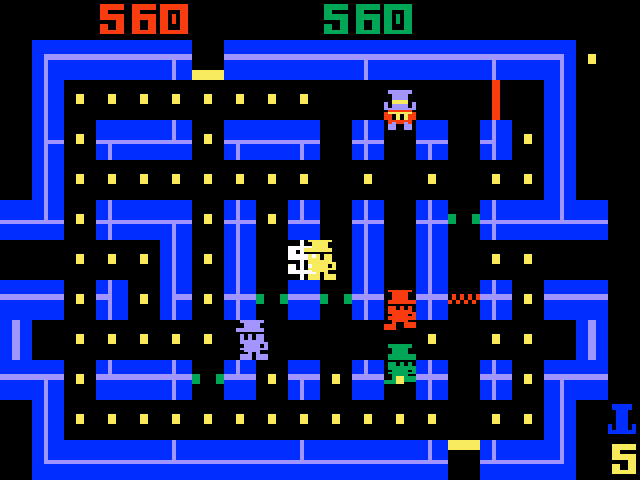
The gaming world had Pac-Man fever in the early ’80s, and an absurd number of maze games were released in its wake. Lock ‘n’ Chase was one of the more creative takes on the genre. In the game, players assume the role of a thief who is attempting to rob a bank of its coins and treasures. Pac-Man had energizers that allowed him to eat his ghost rivals, but no such power-up exists in Lock ‘n’ Chase. Eating the police officers is out of the question, but players can still slow them down by closing doorways throughout the maze. Closing doorways can temporarily trap the police and impede their progress. There are also situations where players can trap themselves to give themselves a breather from their relentless pursuers. Lock ‘n’ Chase requires a little more strategy than Pac-Man, but it’s still a very easy game to jump into. The “burglar alarm” soundtrack leaves a lot to be desired, but I guess that just goes with the territory when you choose a life of crime.
9
Beauty and the Beast
1982
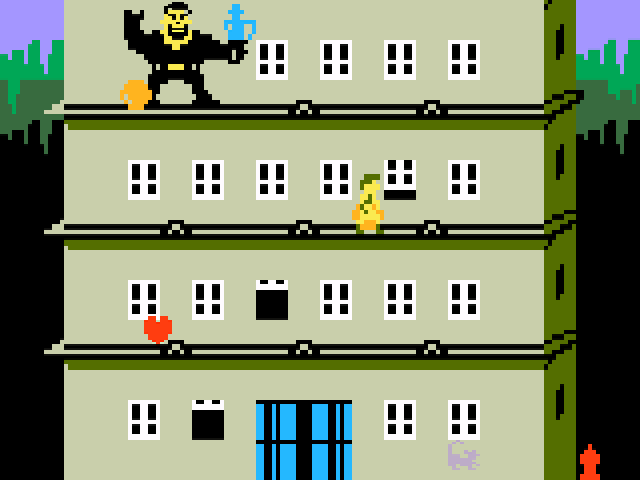
Coleco secured exclusive rights to release Donkey Kong on home consoles in 1982 and included a stellar port of the game with their newly-minted ColecoVision. Coleco also saw fit to port the game to the Atari 2600 and Intellivision. These ports were notoriously bad and have been described as a thinly-veiled attempt to make the ColecoVision version look better in comparison. Intellivision fans looking for their Donkey Kong fix would find solace in Imagic’s Beauty and the Beast. The premise of the game involves an unassuming hero scaling a large building in order to rescue a fair maiden from a stupid animal. It’s a tale as old as time, but the gameplay is as true as it can be. The best thing about Beauty and the Beast is its pacing. The levels of the game can often be completed in a matter of seconds and it almost feels like a WarioWare microgame at times. Your character can jump off a skyscraper and fall 10 screens to the ground below, and he will immediately start climbing again. The action never stops.
8
Shark! Shark!
1982
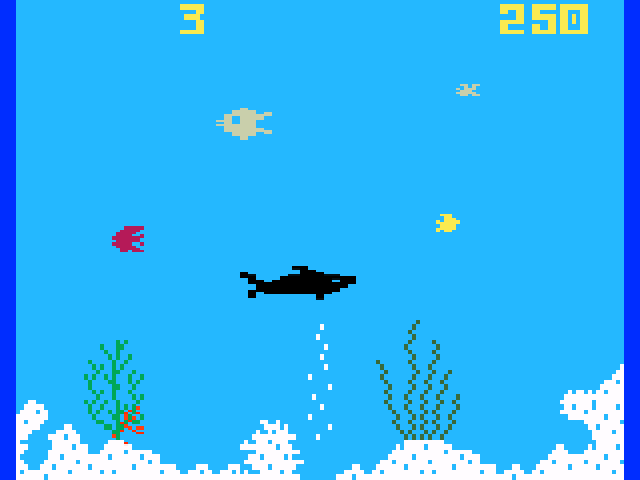
A name like Shark! Shark! sets some pretty high expectations, but the game delivers on its promise of sharks and excitement. This excitement is heightened by the haunting music that plays whenever the menacing shark makes an appearance. Players start the game as a minnow who is trying to survive in hostile waters. By eating smaller fish, players can grow and eventually become a full-sized fish themselves. As you get bigger, your dining options increase. At the same time, moving up the food chain also makes you a bigger target for menacing jellyfish and killer seahorses. Most games in the era simply challenged players to reach a high score, so seeing a character’s appearance evolve as the game progressed was quite novel in 1982. Although the game is ostensibly about sharks, it’s really a profound tale of survival and personal growth. Or maybe I’m just looking into things too much. Either way, it’s a fun game.
7
Diner
1987
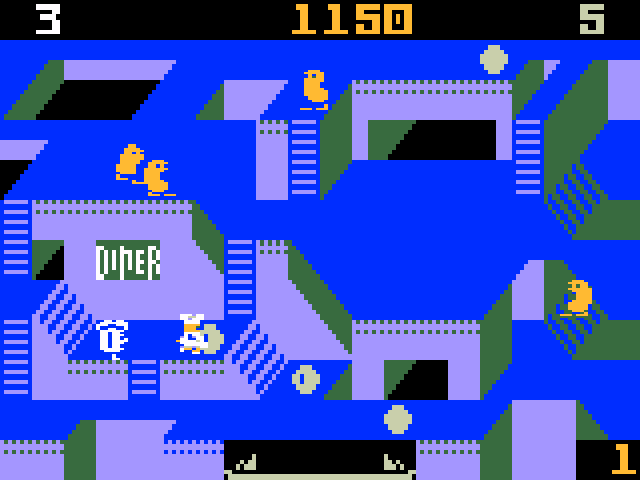
BurgerTime was a huge hit in 1982, but its arcade spinoff (Peter Pepper’s Ice Cream Factory) and arcade sequel (Super BurgerTime) were not widely released. Diner was a console-only sequel to BurgerTime that was released exclusively on the Intellivision. The game abandoned the flat layouts of its predecessor in favor of more complex isometric stages. The game still had a distinct Burgertime flavor, however. Instead of walking over ingredients to form giant hamburgers, players kick giant meatballs down a series of ramps onto a giant plate at the bottom of the screen. The meatballs are also used to attack the enemies who are in constant pursuit. A well-placed kick can cause the meatballs to take out multiple enemies at once, so players are encouraged to plan ahead instead of relying entirely on reflexes. I’m not sure why food monsters are trying to kill him and I don’t know why he’s working in a restaurant designed by M. C. Escher, but Peter Pepper seems to have shit luck. Nevertheless, Diner was arguably the biggest exclusive released on the Intellivision.
6
Pitfall!
1982
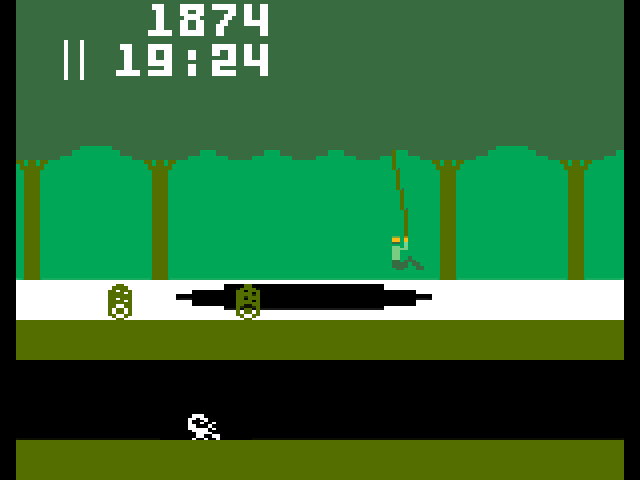
In the early 1980s, the gaming market was still driven by arcades. As such, home consoles tended to rely heavily on ports of high profile arcade games. Pitfall! was one of the rare games that was designed from the ground up with the home market in mind – allowing for a much longer adventure than most arcade games offered. When Pitfall! was released, most games still took place on a single screen, so you can imagine how impressive a game with a whopping 255 screens must have been. During your quest to find treasure, you’ll have several obstacles to avoid – including tar pits, quicksand, rolling logs, rattlesnakes, and scorpions. You’ll also have to clear gaps by swinging on vines and carefully cross ponds by hopping on the heads of hungry crocodiles. Visually speaking, Pitfall! was head and shoulders above most 2600 games, and featured sprites that were multi-colored, non-flickering, and well-animated. The graphics weren’t quite as impressive by Intellivision standards and a lot of gamers found the Intellivision controller to be unwieldy in comparison to the Atari 2600 joystick, but Pitfall! is still a fantastic game and I’m still amazed Activision was able to get so much out of a measly 4KB.
5
Happy Trails
1983
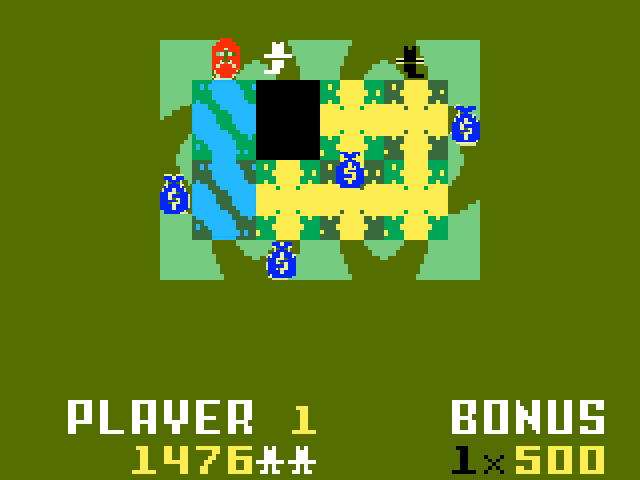
Happy Trails is a clever puzzle game from Activision that took inspiration from Konami’s Loco-Motion. Neither game necessarily gets the attention it deserves today, but Happy Trails is so overlooked that it doesn’t even have a Wikipedia article at the time of this writing. At its core, Happy Trails plays like a glorified slide puzzle. As a mindless cowboy casually walks along a road, the player has to complete the path for him by sliding tiles in place. The cowboy has all the intelligence of a lemming and will blissfully walk to his death if you are unable to position an appropriate path for him. Keeping the cowboy alive is challenging enough, but the ultimate goal is to guide him towards bags of money while avoiding rival cowboys who walk the same paths. The game takes some getting used to, but it does a great job of easing you into things. You can instruct your cowboy to start walking in the opposite direction if you need to buy some more time, and the fast-forward option was an incredibly useful tool for experienced players.
4
Dig Dug
1987
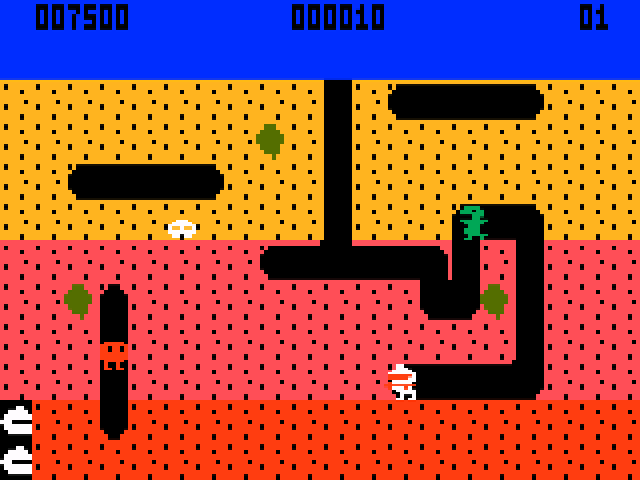
Dig Dug gives players the simple task of digging tunnels and killing underground monsters. The player can defeat said monsters in two ways – both of which are surprisingly sadistic. The first method involves inflating the monsters with a bicycle pump until they explode. The other method involves crushing the monsters with heavy rocks. Since the tunnels themselves effectively act as pathways for the falling rocks, players are strongly encouraged to put some thought into where they are digging. Maze-based games were all the rage in the early ’80s, and I was always intrigued with how Dig Dug allowed players to create their own mazes. The Intellivion version of Dig Dug wasn’t released until 1987, so it looked pretty dated next to NES and Master System games. The fast-paced and addictive play mechanics held up pretty well, however. Since Namco chose to leave the Famicom version in Japan, the Intellivision version was greatly appreciated.
3
Demon Attack
1982
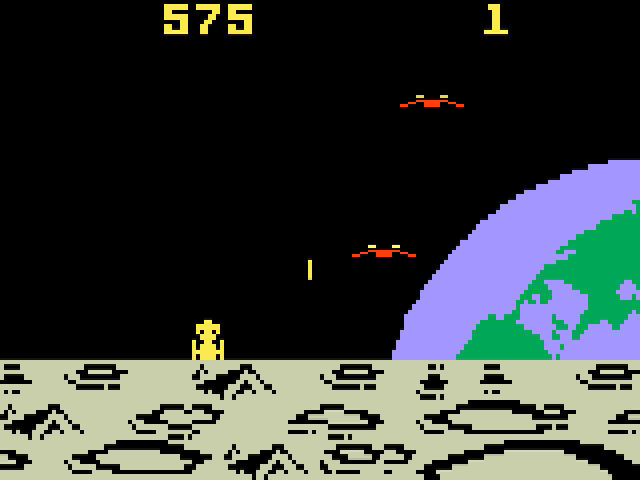
Demon Attack is a typical single-screen shooter that pits players against endless waves of alien spaceships. The game was so similar to Atari’s Phoenix that it even resulted in a lawsuit. The aliens bring new weapons with each passing wave (including long streaming lasers and dangerous cluster bombs.) In later stages, the alien invaders will split into smaller creatures after being shot. The Atari 2600 version is widely considered to be one of the best games on the system, but it’s even better on the Intellivision. The colorful backgrounds helped the game stand out from other space shooters which typically had stark star-field backdrops. From the crater-covered surface of the moon to the massive screen-filling alien mothership, Demon Attack was alive with detail on the Intellivision. It almost makes the Atari 2600 version seem incomplete. The game doesn’t earn a lot of points for creativity, but it’s the best shooter on the Intellivision.
2
BurgerTime
1982
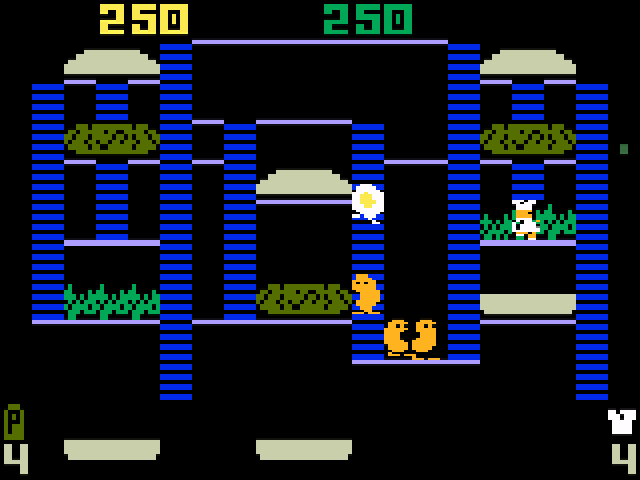
BurgerTime is a classic arcade game that puts players in control of an overworked chef who has to assemble giant hamburgers by walking over various ingredients located across a maze of platforms. While assembling these giant hamburgers, you’ll find opposition in the form of animated food monsters. You can temporarily stun your enemies by shaking pepper on them or eliminate them altogether by causing the giant ingredients to land on them. The premise makes little sense, but it’s relentless fun and surprisingly intense. The Intellivision was marketed as a technologically superior alternative to the Atari 2600, but the system was starting to show signs of age by 1982 in the face of new competition from the ColecoVision and the Atari 5200. When Mattel redesigned their console and re-released it as the Intellivision II, BurgerTime was included as a pack-in. Arcade ports on the system didn’t have the best track record, but BurgerTime outperformed every other console version at the time. BurgerTime was to the Intellivision II what Donkey Kong was to the ColecoVision, and it proved that there was still a lot of life left in the system.
1
Pac-Man
1983
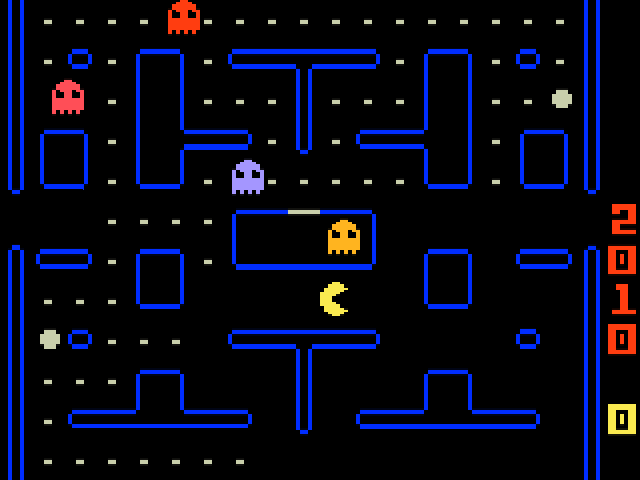
Fans of the maze games had a lot of great choices on the Intellivision. Ladybug, Mouse Trap, and the aforementioned Lock ‘n Chase all played with the formula by letting players control gates or doorways. This effectively allowed them to reshape the mazes in order to slow their enemies down. Pac-Man is a lot more straight-forward. The mazes are static and the entire game consists of eating dots and avoiding ghosts. On paper, Pac-Man seems to lack the complexity that other maze games offer, but there’s an undeniable timelessness to it. It’s simplicity at its finest. Pac-Man isn’t the best-looking game on the Intellivision, but the game was vastly superior to the abysmal Atari 2600 port. I’m not sure why Atarisoft put so much effort into the Intellivision version, but I’m happy that they did. The game runs smoothly, the sprites don’t flicker, and the intermissions from the arcade game are faithfully recreated. It might be a little boring to see Pac-Man ranked so highly on yet another list, but the game is considered a classic for a reason.

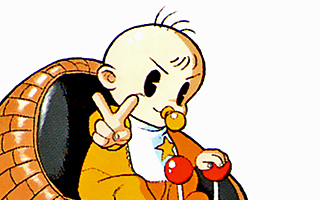
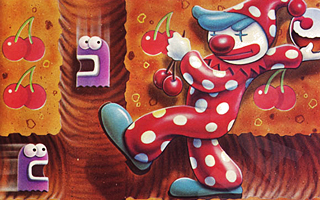
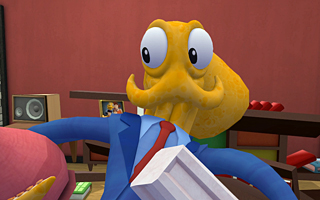
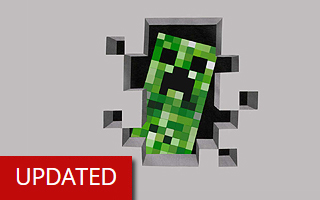
Do you agree with this list? Let us know what you think by leaving a comment below. Your opinion matters!